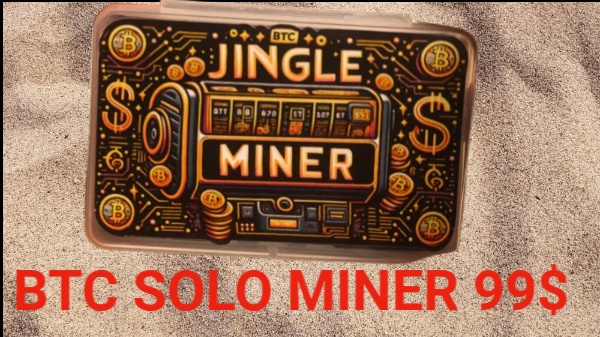Meta Platforms Inc. CEO Mark Zuckerberg is no stranger to grand ambitions. From connecting the world through social media to building a metaverse, Zuckerberg has always aimed high. But his latest project takes things to a whole new level: a $270 million compound in Kauai, Hawaii, complete with a 5,000-square-foot underground bunker.
A Paradise with a Panic Room
The aptly named Koolau Ranch is more than just a luxurious vacation home. It’s a fortress of solitude designed to weather any storm, real or imagined. The sprawling 1,400-acre estate boasts multiple buildings, including two mansions, guest houses, a gym, and even a tennis court. But the pièce de résistance is undoubtedly the subterranean bunker.
This isn’t your average basement hideaway. The bunker is built for serious survival, with concrete-filled metal doors, self-sufficient energy and food supplies, and even a library with a secret escape hatch. The reported cost of this subterranean sanctuary? A cool $100 million, on top of the $170 million Zuckerberg already spent on acquiring the land.
Silicon Valley’s Bunker Mentality
Zuckerberg’s doomsday prep is not an isolated incident. It’s part of a growing trend among Silicon Valley elites who are increasingly investing in elaborate survival measures. From billionaire Peter Thiel’s New Zealand retreat to tech investor Marc Andreessen’s laser focus on self-reliance, the ultra-wealthy seem to be preparing for a future fraught with uncertainty.
Katt Williams on Mark Zuckerberg bunker most underrated part of interview imo🔑 pic.twitter.com/CoUab1p5gF
— ZachVentures☯️ (@ZachVentures) January 4, 2024
What’s Driving the Bunker Boom?
There are several factors fueling this Silicon Valley bunker mentality. Some experts point to the growing distrust in traditional institutions and a belief that the tech elite need to be prepared for societal collapse. Others cite the rise of natural disasters and climate change as potential threats that necessitate extreme preparedness measures.
Beyond the Billions: The Ethics of Escape Hatches
While Zuckerberg’s bunker may be technologically impressive, it also raises ethical concerns. Critics argue that the wealthy are essentially buying their way out of potential crises, leaving the rest of society to fend for themselves. They question the morality of building a luxurious retreat while millions struggle with basic necessities.
So y'all curious to see what Zuckerberg's "Doomsday Bunker" is?
Take a look!👇🏼
Enough money will get you anything you want I suppose…
But the question is WHY?
Why would one of the richest people in the world feel the need to have this built?🤔 pic.twitter.com/XVM9eTq2GP
— SaltyGoat (@SaltyGoat17) January 14, 2024
A Symptom of a Larger Malaise?
Zuckerberg’s Hawaiian bunker is more than just a concrete shelter; it’s a symbol of a growing anxiety among the tech elite. It’s a physical manifestation of their fear of the future and a tacit admission that they may not be able to fix the problems they helped create.
The Koolau Ranch stands as a stark reminder of the widening inequality in our society. While some prepare for doomsday scenarios in luxury bunkers, others grapple with the harsh realities of climate change, economic instability, and political unrest. The question remains: can Zuckerberg’s escape hatch truly offer solace in a world on the brink?
https://twitter.com/ronin19217435/status/1744104074335658370
Bunker Up? Legal and Ethical Implications of Building Your Own Doomsday Den
Mark Zuckerberg’s $270 million Hawaiian bunker has sparked a flurry of questions about the legal and ethical implications of building private shelters designed for extreme scenarios. While the allure of self-reliance and survival in times of crisis is understandable, the reality is far more complex. Let’s delve into the legal and ethical landmines surrounding personal bunkers:
Legality:
- Zoning and Permits: Building a bunker requires navigating a maze of zoning regulations and building permits. Some areas may have restrictions on underground structures or require specific safety features. Ignoring these regulations can lead to hefty fines and even demolition orders.
- Environmental Impact: Construction can disrupt ecosystems and disturb sensitive areas. Obtaining environmental clearances and minimizing the footprint are crucial to avoid legal repercussions.
- Property Rights and Access: Bunks often require access to neighboring land for water, power, or escape routes. Secure agreements and easements with neighboring property owners are essential to avoid legal disputes.
Ethics:
- Equality and Access: Luxurious bunkers raise concerns about the wealthy escaping societal crises while others face the brunt of the consequences. This disparity can exacerbate existing inequalities and foster resentment.
- Environmental Responsibility: Building and maintaining a bunker consumes resources and generates waste. Balancing personal safety with environmental sustainability is crucial.
- Social Responsibility: Preparing for doomsday scenarios often involves hoarding resources and focusing on individual survival. This can undermine cooperation and community resilience, weakening the collective ability to face challenges.
Beyond the Bunker:
Instead of retreating into individual shelters, consider focusing on building collective resilience:
- Investing in infrastructure and public services: Strong infrastructure and well-funded public services can better withstand crises and benefit everyone.
- Promoting community preparedness: Encouraging disaster preparedness training and resource sharing within communities can foster collaboration and strengthen collective defenses.
- Addressing root causes: Tackling climate change, inequality, and other systemic issues can create a more stable and resilient society for all.
Building a private bunker may seem like the ultimate insurance policy, but it’s important to consider the legal and ethical complexities involved. By focusing on collective preparedness and addressing the root causes of potential crises, we can build a more resilient future for everyone, not just the privileged few with doomsday dens.
🔥🚨BREAKING: Grammy nominated legendary rapper Rick Ross announced that he is now building a ‘doomsday bunker.’
This comes a few weeks after it was announced that Mark Zuckerberg and other billionaires were building bunkers along with Joe Biden. pic.twitter.com/TckGkysgog
— Dom Lucre | Breaker of Narratives (@dom_lucre) January 18, 2024
